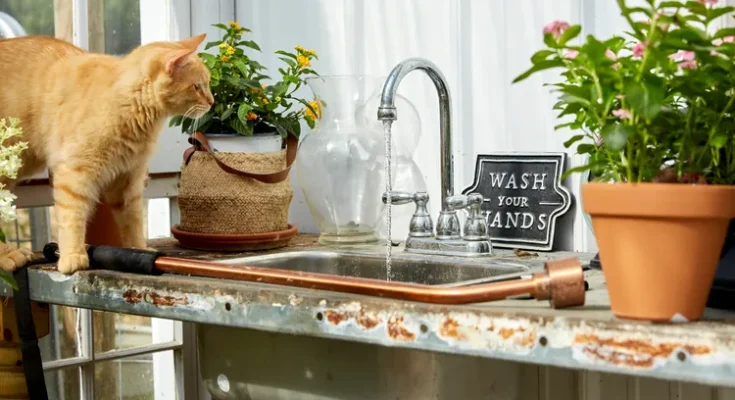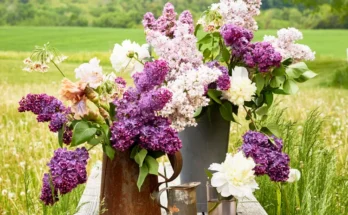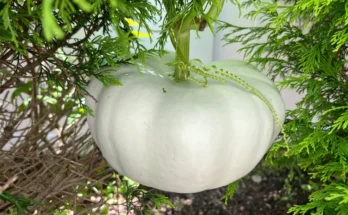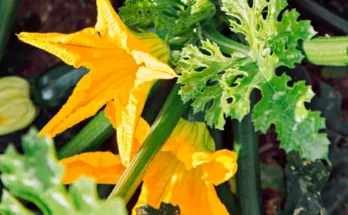Make every drop count with these expert-approved tips for using graywater in your garden.
If you want to save money on your water bill or use less of a precious resource as droughts become more common, there are many ways to reuse your home’s water, and most are surprisingly simple. Understanding the differences between types of household waste water is key to using them safely and effectively in your garden. These expert tips and techniques will help you keep your garden hydrated without wasting a drop.
What Is Graywater?
Graywater, the waste water from indoor machines and plumbing (except toilets), is the largest source of waste water in homes, making up to 40 gallons per person daily.1
Safety–4400 EEEH and. Greywater reuse | washington state department of health.
Beyond saving money, reusing graywater can ease strain on municipal wastewater systems, especially during a drought, and support healthier soil by providing moisture where plants need it most.
Graywater includes waste water from the shower, bath, and washing machine. It’s distinct from more contaminated dark graywater, such as kitchen sink or dishwasher water, which often contains oils, food scraps, and harsh detergents. It’s also different than blackwater, the highly contaminated waste from toilets. Blackwater should never be reused.
Reusing graywater requires knowledge about the ingredients in your water and the places you want to use it in your landscape, but it’s well worth the effort. According to author and co-founder of Greywater Action, Laura Allen, replacing irrigation with graywater can create a 16-40% reduction in water use.
Graywater isn’t safe to drink, but it is usable for some plants in certain conditions. It’s not recommended for edible root crops or sensitive, smaller plants, but it works well for larger annual vegetables, perennials, shrubs, vines, and trees.
Know Your Water
If you’re using graywater in your landscape, you need to know what else is in it to understand where it’s safe to use. “Whatever you put down the drain goes into the graywater,” Allen said in a webinar. “We can control and monitor what products we put in that water.”
While most liquid soaps don’t change water pH, solid soaps can make it more basic, which is problematic for acid-loving plants like azaleas and blueberries. Greywater Action suggests seeking out plant-friendly soaps and cleansers.
“All products should be biodegradable and non-toxic,” it recommends. “In addition, they should be low in salt (sodium) and boron (borax), two common ingredients that are non-toxic to people but are harmful to plants and the soil. Chlorine bleach is also harmful to plants and should be diverted with any other harmful products to the sewer or septic system. Hydrogen peroxide bleaches are less harmful and can be used instead of chlorine.
Depending on its components, graywater use can impact soil pH, salinity, and nutrient balance over time, so monitor plant health and consider periodic soil testing if using graywater long-term. Signs of stress, like yellowing leaves or salt crust on soil, may indicate a need to flush the area with fresh water or amend the soil.
Ways to Save and Reuse Water
Here are four household sources for saving water and how to use it safely on your plants. When reusing graywater, remember to use it within 24 hours so it’s as fresh as possible to limit potential bacterial growth. Also, always apply graywater to the soil, not the leaves, to avoid the risk of microbial contamination or fungal issues.
1. Running Water
Two of the easiest ways to conserve water are by having a bucket or even a watering can in your kitchen and bathroom to collect running water while you perform daily tasks like brushing your teeth or showering. This water, free of soap or other contaminants, can be used directly on houseplants or in the garden.
2. Cooking Water
The water you used to boil your eggs or pasta doesn’t have to go to waste, provided it’s not salted. Once cooled, it can be reused on your indoor or outdoor plants. Some pet owners even use water from their pet’s bowl for their plants as they refresh it.
3. Laundry Water
One of the most common ways to reuse graywater is to create a “Laundry to Landscape” system developed by Art Ludwig. You can find ready-made kits or make your own with PVC pipe and simple components. It involves installing a 3-way diverter valve on the washing machine hose that can send water to the sewer system or a pipe outside.
When you’ve had a downpour and your ground is saturated, switch the valve to divert the water to the sewer. That pipe typically emits water to a basin of wood-chip mulch, which helps filter the water. This system is best for irrigating a single area of larger plants. While the mulch helps filter and break down particulates, you’ll need to clean it out annually.
4. Air Conditioner Condensation
When running consistently, dripping condensate from your air conditioner can supply up to 20 gallons of water a day. According to Allisoair.com, the water is safe for irrigating plants because it will be free of any additives, including chlorine.2
While a simple bucket will do, if you are adding an AC unit, consider planning ahead. When her new unit was installed, blogger Ashley Goldman asked the installer to rig a pump to an attractive urn-style rain barrel 30 feet away with underground copper piping. One spigot is useful to fill watering cans and a second one can connect to a hose.



